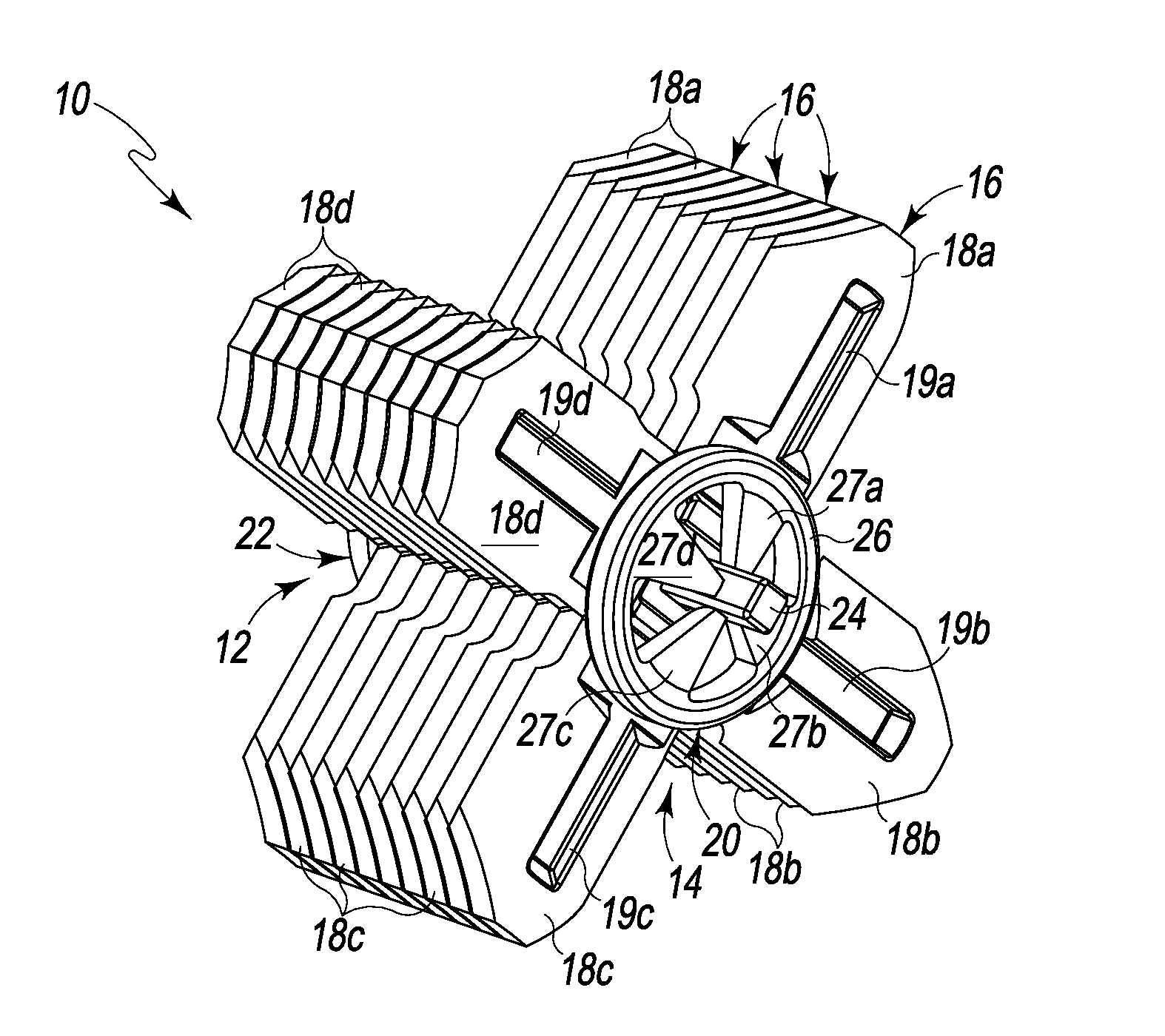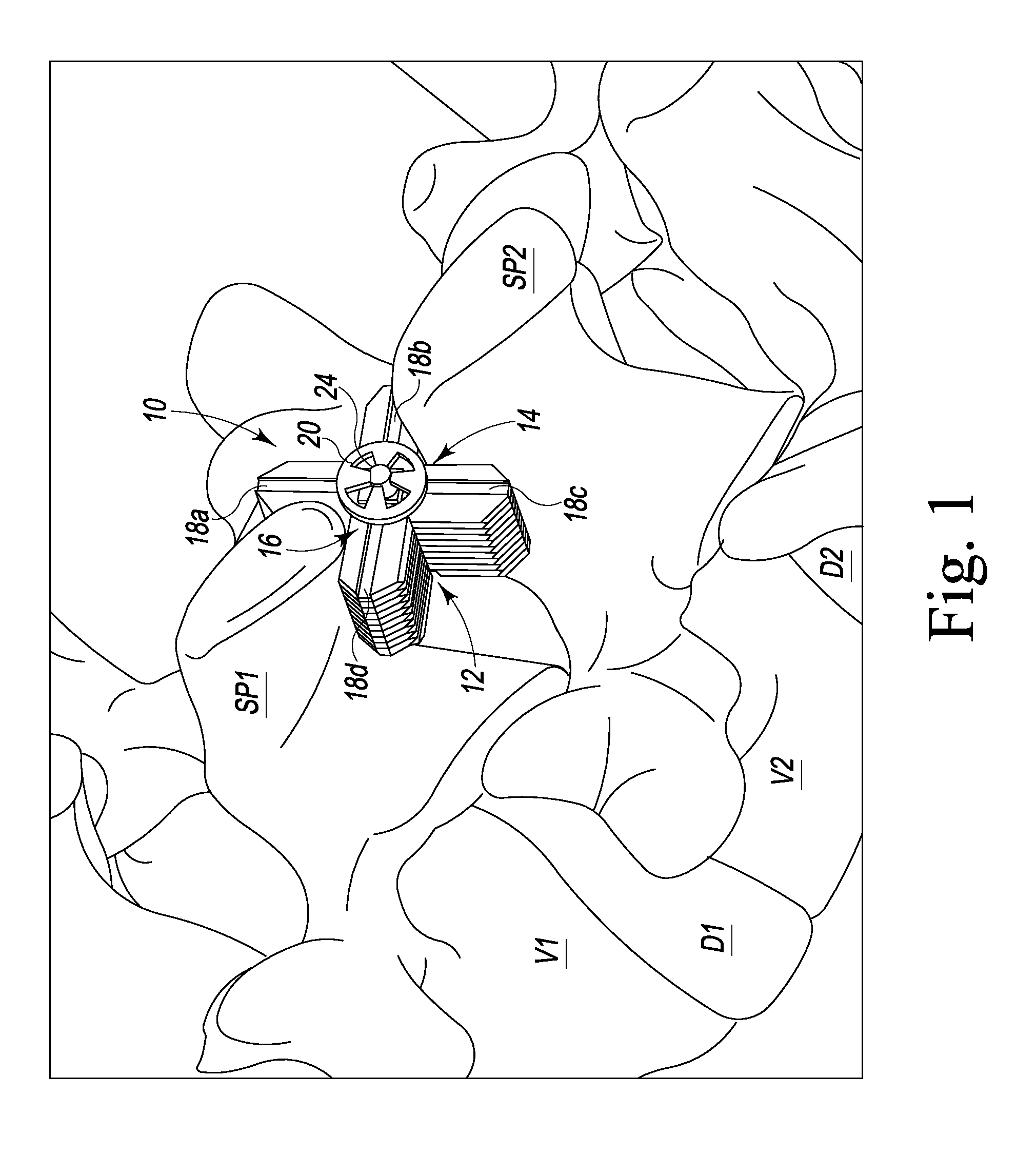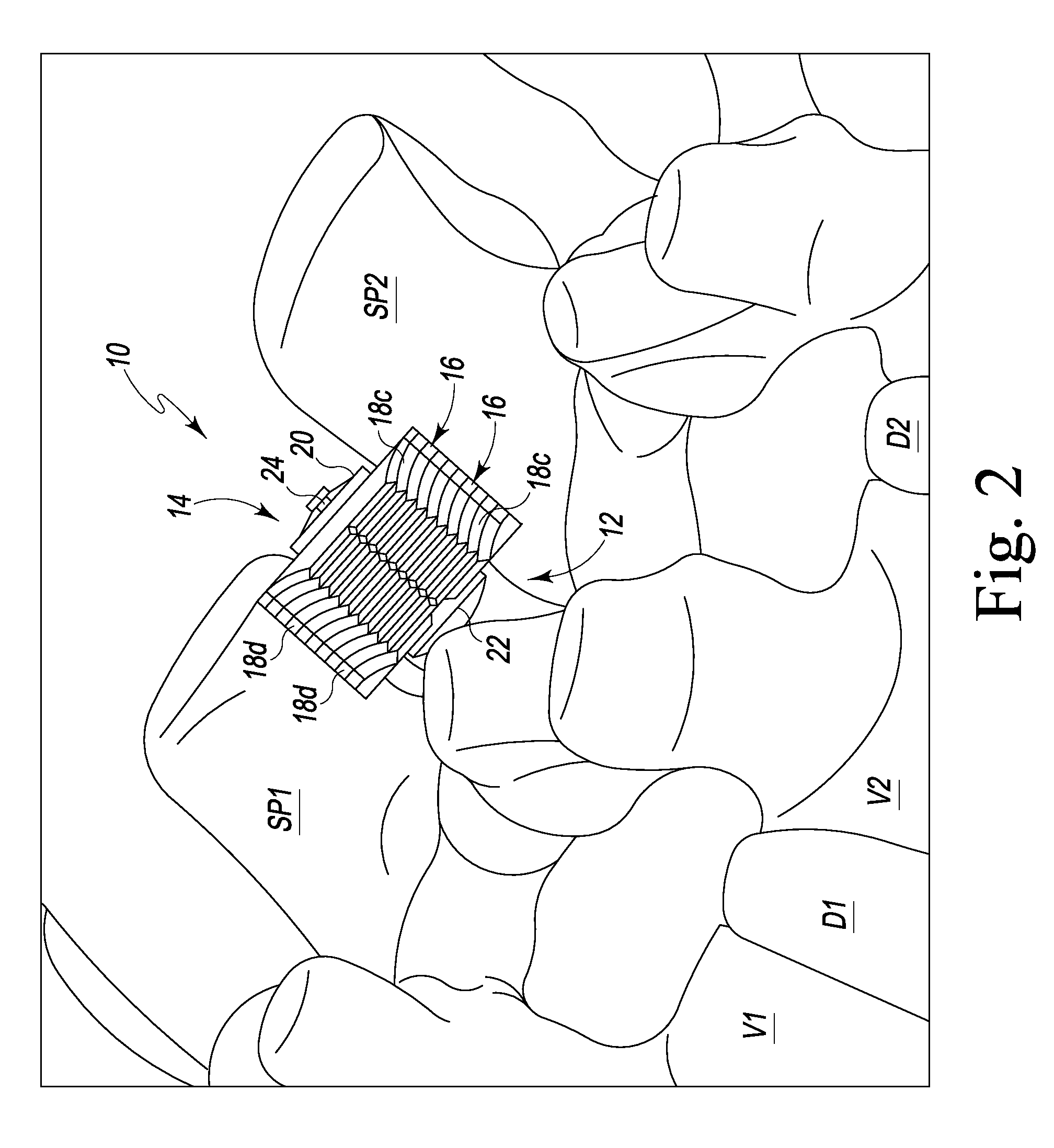Spinous process spacer
a technology of process spacer and spine, which is applied in the field of spine devices, can solve the problems of nerve compression, obesity, depression, general physical deterioration, non-surgical treatment of spinal canal narrowing, etc., and achieve the effect of reducing the risk of neural injury
- Summary
- Abstract
- Description
- Claims
- Application Information
AI Technical Summary
Benefits of technology
Problems solved by technology
Method used
Image
Examples
Embodiment Construction
[0034]FIGS. 1 through 3 depict a portion of a human spine wherein a spinous process spacer 10, fashioned in accordance with the present principles, has been implanted between bony protrusions of adjacent vertebrae. Particularly, there is depicted adjacent vertebra V1 and V2 of a portion of the spine, with a spine disc D1 situated between the vertebrae. Vertebra V1 has a spinous process SP1 and vertebra V2 has a spinous process SP2. The spinous process spacer 10 is shown situated between the spinous processes SP1 and SP2 of respective adjacent vertebrae V1 and V2 in the expanded position. It should be appreciated that while the present spinal process spacer 10 is shown situated between spinal processes SP1 and SP2, the present spinal process spacer 10 may be used as an interlaminar, interbody, or interbony spinal protrusion spacer. As such, while the present spinal process spacer 10 is shown and described in relation to the spinal processes of adjacent vertebrae, the spinal process s...
PUM
 Login to View More
Login to View More Abstract
Description
Claims
Application Information
 Login to View More
Login to View More - R&D
- Intellectual Property
- Life Sciences
- Materials
- Tech Scout
- Unparalleled Data Quality
- Higher Quality Content
- 60% Fewer Hallucinations
Browse by: Latest US Patents, China's latest patents, Technical Efficacy Thesaurus, Application Domain, Technology Topic, Popular Technical Reports.
© 2025 PatSnap. All rights reserved.Legal|Privacy policy|Modern Slavery Act Transparency Statement|Sitemap|About US| Contact US: help@patsnap.com



